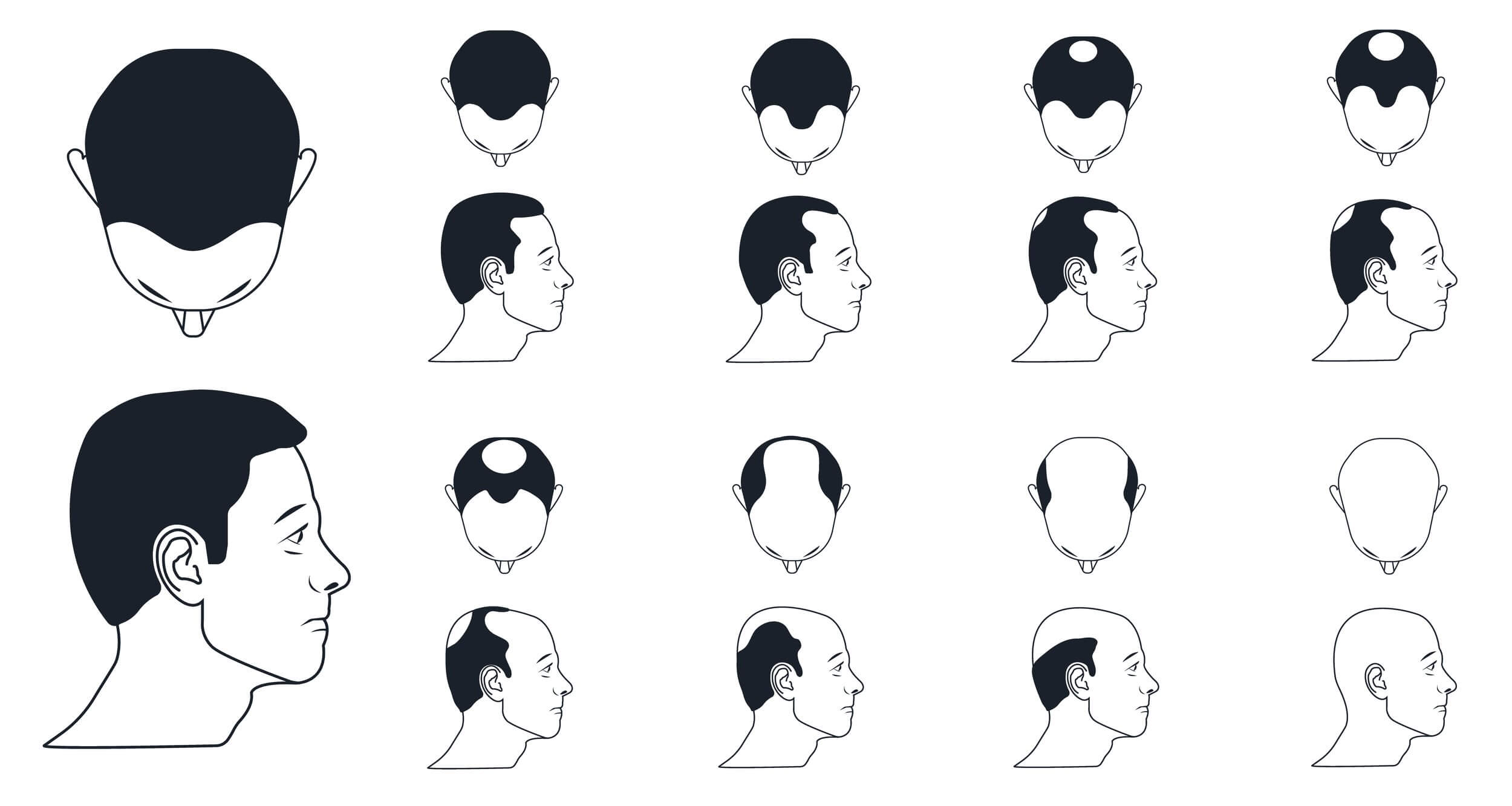Norwood Scale: Understanding Male Pattern Baldness
The Norwood Scale, also known as the Hamilton-Norwood Scale, is a classification system used to measure the progression of male pattern baldness (androgenetic alopecia). Developed by Dr. James Hamilton in the 1950s and later revised by Dr. O’Tar Norwood in the 1970s, this scale is widely used by dermatologists, hair transplant specialists, and researchers to diagnose, track, and treat hair loss.

How the Norwood Scale Works
The Norwood Scale divides male pattern baldness into seven stages, with variations in some stages to account for different patterns of hair loss. Here’s a breakdown:
Stage 1: No Significant Hair Loss
- Hairline shows minimal to no recession.
- Considered a full head of hair with no visible balding.
Stage 2: Early Recession
- Slight hairline recession at the temples.
- Often referred to as a mature hairline and is not necessarily a sign of baldness.
Stage 3: Noticeable Hair Loss
- The first stage officially classified as baldness.
- Significant recession at the temples, forming an “M” shape.
- Some men may also experience thinning at the crown.
Stage 4: Advanced Hairline Recession
- Hairline recedes further, creating a more pronounced “M” or “U” shape.
- Thinning at the crown becomes more noticeable.
- A band of hair separates the balding areas.
Stage 5: Larger Bald Spots
- The band of hair separating the hairline and crown becomes thinner.
- Bald areas at the front and crown enlarge and start merging.
Stage 6: Extensive Hair Loss
- The band of hair disappears completely, connecting the hairline and crown balding areas.
- Hair loss progresses on the sides of the scalp.
Stage 7: Complete Baldness
- The most advanced stage of hair loss.
- Only a thin, horseshoe-shaped strip of hair remains on the sides and back of the head.
Norwood Scale Variants
In addition to the main stages, there are subtypes to account for variations in hair loss patterns:
- Type A Variant: Hairline recedes uniformly from front to back without much crown involvement.
- Diffuse Thinning: Thinning occurs across the top of the scalp without significant hairline recession.
Why the Norwood Scale Matters
The Norwood Scale is a useful tool for:
- Diagnosis: It helps physicians identify the stage of male pattern baldness.
- Treatment Planning: Guides the choice of treatments such as medication (Minoxidil, Finasteride) or hair transplant surgery.
- Tracking Progression: Allows patients and doctors to monitor hair loss over time.
- Hair Transplant Suitability: Determines if someone is a good candidate for hair restoration procedures.
Treatment Options by Norwood Stage
Early Stages (1-3):
- Medications like Finasteride and Minoxidil.
- Lifestyle changes and dietary improvements.
- Low-level laser therapy (LLLT).
Middle Stages (4-5):
Advanced Stages (6-7):
- Extensive hair transplant surgery.
- Scalp micropigmentation (SMP) for a shaved-head appearance.
- Acceptance of baldness or wigs/hair systems.
Norwood Scale and Genetics
Male pattern baldness is influenced by genetics and hormones. The hormone dihydrotestosterone (DHT) plays a critical role in shrinking hair follicles, leading to hair loss in genetically predisposed individuals.
If you notice early signs of hair loss, consulting a hair specialist can help you take preventive measures or slow the progression.
